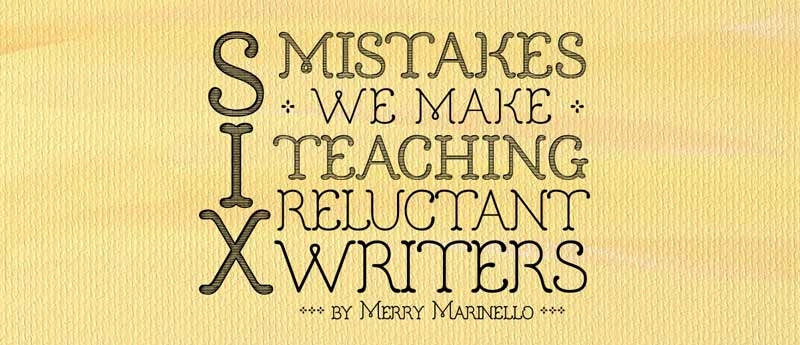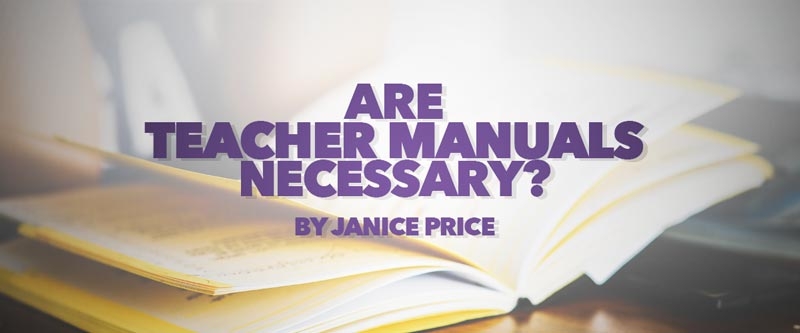When I was 7, I wrote a story that my mom liked so well, she submitted it to Cricket magazine for publication. Yes, I received my first rejection letter in second grade! But that memory lingered with me and gave me a false impression of what’s “normal” for second grade!
I promised I’d write about some of my failed attempts to teach writing. I’m probably my own worst enemy in this area!
When I was 7, I wrote a story that my mom liked so well, she submitted it to Cricket magazine for publication. Yes, I received my first rejection letter in second grade! But that memory lingered with me and gave me a false impression of what’s “normal” for second grade!
Mistake #1: Expecting too much too soon.
If you have young children who love to write, great! Let them write to their heart’s content. If you don’t, then don’t sweat it. If you have older children who really struggle with grammar and mechanics—don’t overload them with excessive editing requirements. (I love IEW’s focus on giving kids as much help as they need.)
Mistake #2: Copywork.
Now, I love copywork as a tool for gently teaching all kinds of things, from grammar and mechanics to literary styles and that ineffable quality of “voice.” It’s also great for helping a child who struggles with writing to build up stamina. You can start with short segments and gradually lengthen them. So, what’s the problem? The problem was in my execution. I chose passages from books without realizing that the passage could be too difficult. My reasoning—all of the words are right there, the child copies them, what could be easier?
Then I took a copywork and dictation class from bravewriter.com and learned why my children could leave letters out, leave words out, misspell words and so-on in their copywork.
One of the first exercises we did in the class involved doing copywork in 4 different languages: Dutch, German, French, and English. The passage in Dutch was the most difficult—the spellings were not at all phonetic in the way that our language works. I found myself trying to make up phonetic strategies to copy it but most often having to simply memorize the letters in order, the way one might memorize numbers in a phone number. This is what copywork is like for children who don’t understand how the phonograms work and actually undermines learning for them—it encourages them to rely on strategies that are not helpful.
German was a bit easier, and that process compares to children who do “fair” with copywork but still make many mistakes. French was still easier, and compares to the child who does well with copywork but doesn’t really enjoy it. English of course compares to the child who enjoys copywork and does well at it.
For a bonus, we also tried copywork in Greek. Now, I have seen Greek letters before but never studied them. I found that in order to copy Greek, I had to stop mid-character and look at the original again to see how to form the character. This would compare to the young student or one who isn’t sure how to form the letters, struggles with handwriting, and so on.
My kids were typically in the Greek-Dutch-German phases, and I was giving them a copywork length and difficulty comparable to what a child in the “English” phase would do! One of the reasons I so appreciate All About Spelling is that it enabled us to go back to the beginning—focus on writing letters and segmenting, then simple words, then 2-word phrases, short sentences, and so on. It gave them the incremental steps that they needed to be successful.
Mistake #3: Doing Things Out Of Order!
It seems so obvious to me now to work on things in an orderly fashion—first phonics and reading, then handwriting, then add in spelling, and then finally, when they are ready, work on formal grammar and writing. (Early on, I do like to work on grammar informally as it relates to reading and speaking). But I was so excited to get to writing that I pushed my kids to write something—anything, before they were really ready. They needed to have a fairly large number of words successfully under their spelling “belts” before they could be successful with communicating thoughts in writing. I did do a lot of narration and oral writing early on (they spoke, I scribed), and that was a good choice. But if I had it to do over again, I would have worked on spelling more before trying to get them to do their own writing. Narration develops creative and organizational skills at a pace that fits the child, without stressing them out with writing before they are equipped with the skills.
Mistake #4: Using the Wrong Teaching Style
I love the idea of natural methods, but that teaching style didn’t work for my oldest.
Some kids love discovery-oriented programs and learning processes, while others don’t do well with them. And some, like my son, may even feel betrayed by them. In my son’s mind, to teach in that fashion is to purposefully hold back the information that will help a person be successful—to set them up for failure. Wow! It took me a few failed curriculum choices, some tentative forays into the dreaded workbooks, and then stumbling across incremental, mastery-based materials to help me see the type of approach that would work best for this child.
Mistake #5: Worry.
And the partner to worry is mistake #1, pushing. Many of us start out with the mistaken impression that all homeschooled kids are “ahead.” Then we have a child who struggles, and fear sets in. Pretty soon we just want our kids to be “on grade level” to help us feel like we are not inadequate, not failures, that we didn’t make some huge mistake by homeschooling. Maybe friends and relatives add to our doubts by quizzing our children and exposing their struggles, or telling us they wouldn’t have trouble if we would just put them in school. Worry is detrimental to the teacher and shakes a student’s confidence, as does too much pushing. And it was all for nothing, because the skills do come together when the children are ready. The best thing I did for myself in this situation was give myself the freedom to say, “If my kids have to take a remedial writing class in college, it’s not the end of the world.” That took the monkey off my back, and gave me such a sense of freedom — I could focus on helping my kids learn the next thing instead of worrying about failure.
Mistake #6…
…Mistaking a learning disability for laziness, and being too afraid of learning disabilities to learn about them.
What mistakes have you learned to overcome?





